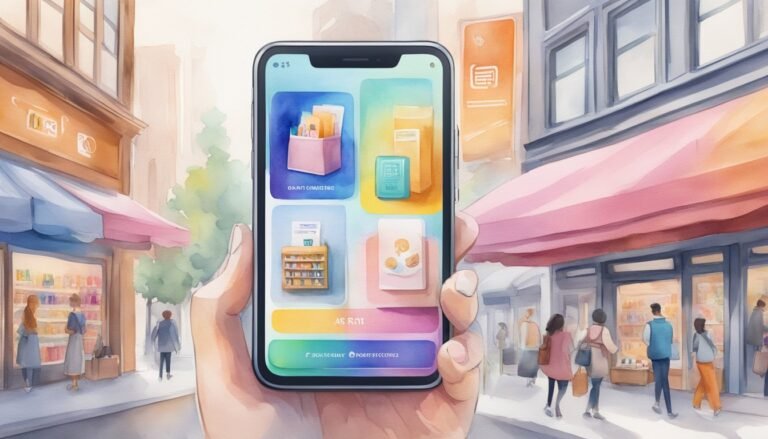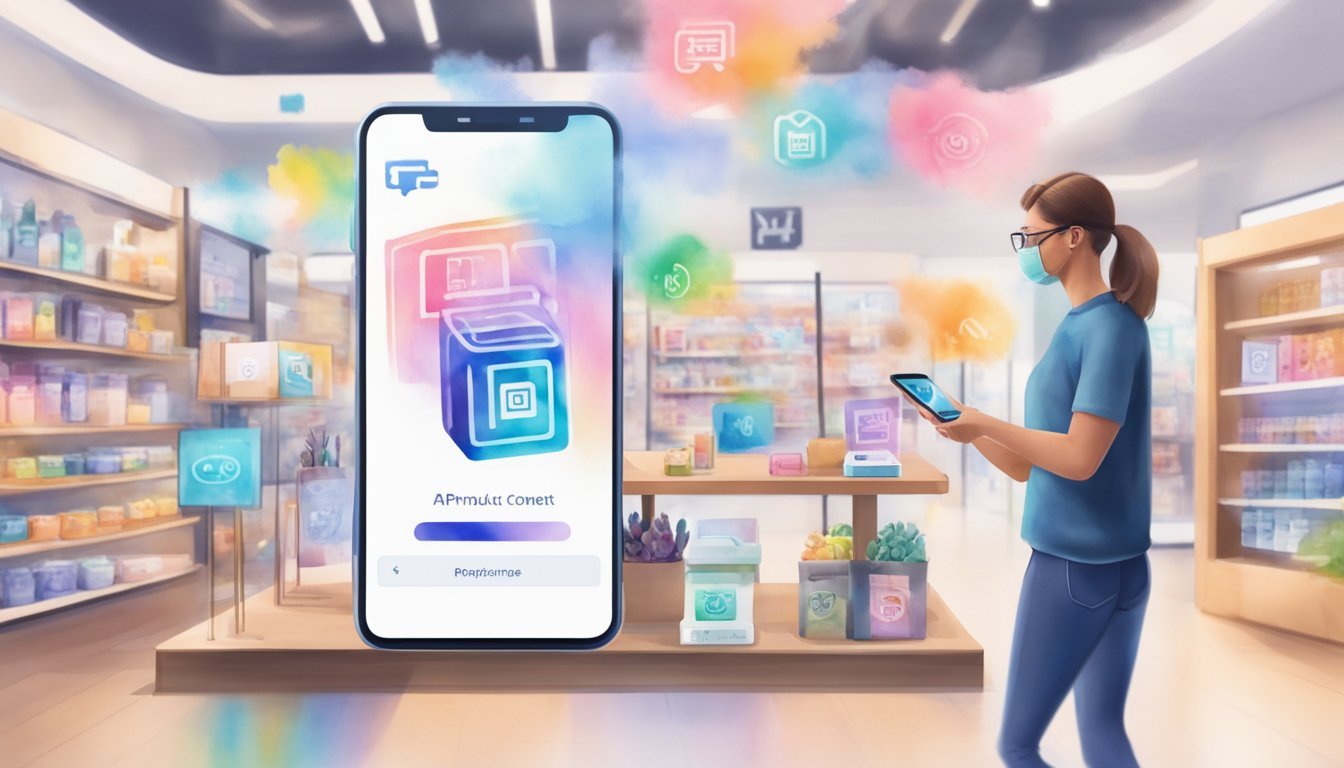5 Ways to Use Augmented Reality in Your Marketing Campaigns: Enhance Engagement and Drive Results

Augmented Reality (AR) has significantly transformed the landscape of marketing campaigns.
As brands compete to capture the attention of consumers, AR provides a unique opportunity to engage them in interactive and immersive experiences.
By seamlessly blending digital elements with the physical world, AR has become a potent tool to enhance customer engagement and brand perception.

If you are looking to make your marketing campaigns stand out, AR can offer innovative ways to connect with your audience. AR’s ability to create memorable experiences can lead to increased interest in your products and brand.
Harnessing AR technology in your campaigns can set you apart from competitors and leave a lasting impression on your customers.
1) Interactive Product Demos
Interactive product demos allow customers to experience products digitally before purchasing.
Using augmented reality (AR), you can create lifelike previews of your products.
Customers can see them in their own space, helping them make informed decisions.
For instance, AR can transform how you showcase furniture.
Customers can place virtual furniture in their homes using their phone cameras.
This eliminates uncertainty and boosts confidence in their purchase decisions.
Cosmetic brands are also utilizing AR.
By offering virtual try-ons, customers can see how makeup will look on their skin.
This reduces returns and increases customer satisfaction.
You can use AR for complex products as well.
Demonstrating a new gadget’s features through a 3D model helps customers understand its benefits.
This hands-on experience can drive higher engagement and sales.
Location-specific AR experiences are another option.
Customers can use their phones to unlock hidden features or benefits when they visit your store.
This offers a unique and memorable shopping experience.
Brands have found AR demos enhance engagement.
Potential buyers spend more time interacting with your products, leading to higher conversion rates.
These experiences stick with customers, fostering brand loyalty.
Augmented Reality simplifies your marketing with real-time updates.
If your product changes, you can easily update the AR demo.
This keeps your marketing efforts relevant and up-to-date.
Interactive product demos are not just for physical products.
Digital products like apps or software can benefit too.
Offering a virtual walkthrough helps users understand features before committing.
Incorporating interactive product demos using AR into your marketing campaign makes your brand stand out.
It bridges the gap between online and in-store shopping, providing a seamless and engaging customer experience.
2) Augmented Reality Advertisements
Augmented reality (AR) advertisements can make your marketing more engaging.
By using AR, you can create interactive ads that captivate your audience.
These ads can combine real-world environments with digital elements like graphics, text, or videos.
An example of AR in advertising is the Coca-Cola campaign, which created a mini quest for users.
This approach turns a simple advertisement into an interactive experience, making it more memorable.
AR ads give users a reason to spend more time with your brand.
Another benefit is that AR ads can be targeted to specific locations.
This allows you to tailor your message to different groups of people based on where they are.
For instance, a store can create an AR ad that activates when someone is nearby, encouraging them to visit.
AR ads can also be integrated into social media.
Platforms like Snapchat and Instagram now offer tools for creating augmented reality filters and effects.
These tools make it easier for you to engage with a younger audience who are already familiar with AR experiences.
The versatility of AR ads allows businesses to showcase products in new ways.
You can let customers try on virtual clothing or see how furniture looks in their home before they buy.
This can increase customer satisfaction and reduce returns.
Incorporating augmented reality into your advertising strategy can set you apart from competitors.
It offers a unique way to connect with customers and create lasting impressions.
By leveraging AR technology, you can enhance the effectiveness of your marketing campaigns.
To see some powerful examples of branded AR campaigns, you can check out this collection of AR advertisements.
3) Virtual Storefronts
Virtual storefronts offer a new way for customers to explore your products.
By using augmented reality, you can create a digital version of your store that customers can visit from their devices.
This allows them to browse products, get detailed information, and even make purchases without needing to visit a physical location.
Shoppers can see how products fit into their own spaces.
For example, customers can use a “view in your space” feature to visualize furniture or decor items in their homes.
This reduces uncertainty and enhances the shopping experience.
Embedding interactive elements is another way to enhance virtual storefronts.
You can include clickable hotspots that provide more details about products, such as pricing, features, and customer reviews.
This helps customers make informed decisions.
Virtual storefronts can also offer exclusive online-only deals or events.
You can host virtual product launches or special sales events that are only accessible through the virtual storefront.
This can create excitement and drive traffic to your online store.
Finally, virtual storefronts are accessible 24/7.
This means that customers can shop at their convenience, whether they are at home, at work, or on the go.
Providing this constant access can increase sales and customer satisfaction.
4) AR-Powered Product Packaging
AR-powered product packaging can transform how customers interact with your products.
Imagine scanning a product’s packaging with a smartphone to unlock new information, videos, or playful animations.
This technology adds an element of fun and surprise to the shopping experience.
Using AR, you can reimagine traditional packaging.
For instance, scanning a cereal box might reveal animated characters or an interactive game.
This can make your product more engaging and appealing.
AR packaging also offers practical benefits.
You can convey additional product details, instructions, or promotions that wouldn’t fit on the physical packaging.
Shoppers can scan a label to learn about ingredients, usage tips, or warranty information.
Shifting to AR packaging isn’t solely about entertainment.
It can provide value by making customers’ lives easier.
For example, a beauty product’s packaging could show virtual try-ons or tutorials when scanned.
Additionally, AR packaging helps your brand stand out in a crowded market.
It’s a memorable experience that can foster customer loyalty and encourage repeat purchases.
Successful examples include brands like Burger King and Ikea, who have embraced AR in their marketing strategies to great effect.
By using this technology, you can create a unique and modern customer experience.
Explore more innovative ideas by checking Vossle for details on how brands are implementing AR in their marketing campaigns.
5) Enhanced Event Experiences
Using augmented reality (AR) in event marketing can transform how attendees engage with your brand.
AR allows you to blend digital elements with the physical world, creating interactive and memorable experiences.
Imagine attendees interacting with AR art murals at your event.
These murals can come to life with animations and 3D effects, making the experience more engaging.
This can elevate your event’s atmosphere and leave a lasting impression.
You can also offer AR-based scavenger hunts, where attendees use their smartphones to search for virtual items within the event space.
This encourages movement and exploration, keeping your audience engaged and entertained.
Brands can create virtual try-on stations.
This technology lets attendees see how products, like clothes or accessories, would look on them without any physical interaction.
It adds a fun, futuristic element to your event and can drive better engagement.
Using AR for live demonstrations can be a game-changer.
Demonstrate complex products or services with interactive 3D models, allowing attendees to explore features in detail.
This method conveys information effectively and keeps interest high.
AR photo booths are another great addition to events.
Attendees can take photos with digital effects and branded backgrounds, which they share on social media.
This boosts your brand’s visibility and gives attendees a fun keepsake from the event.
For more on using AR to elevate your events, check out these immersive activation concepts and ways to engage your audience with AR.
Understanding Augmented Reality in Marketing
Augmented Reality (AR) is revolutionizing the way businesses engage with their customers.
This section explores what AR is and how it differs from Virtual Reality (VR), helping you understand its unique benefits for marketing.
Definition and Overview
Augmented Reality enhances your real-world experience by overlaying digital information on physical environments.
Using devices like smartphones or AR glasses, you can interact with virtual objects in real time.
For instance, a furniture retailer might use AR to let customers visualize how a sofa would look in their living room before buying.
AR in marketing helps in creating more immersive and interactive experiences.
It bridges the gap between the digital and physical worlds, making marketing campaigns more engaging and memorable.
This technology can be used in various industries, from retail to real estate, allowing customers to interact with products in new and exciting ways.
AR vs. VR: Key Differences
While AR adds digital elements to the real world, Virtual Reality (VR) creates a completely virtual environment.
In VR, you are entirely immersed in a digital space, often using a headset.
This difference is crucial for marketing strategies because AR allows your customers to stay connected to their physical surroundings while interacting with digital enhancements.
AR is generally more accessible since it often only requires a smartphone, whereas VR needs specialized equipment.
This accessibility makes AR a practical choice for many marketing campaigns.
Additionally, because AR combines real and virtual worlds, it can offer context-relevant experiences that are more directly tied to real-world scenarios, enhancing customer engagement and satisfaction.
Using AR, you can provide interactive demonstrations, virtual try-ons, and enhanced product details, making your marketing efforts more dynamic and effective.
Benefits of Using Augmented Reality in Marketing

Augmented reality (AR) offers significant advantages in marketing, primarily through enhanced customer engagement and increased brand awareness.
AR can captivate your audience and create immersive experiences.
Enhanced Customer Engagement
AR allows you to create interactive experiences that capture your customers’ attention and keep them interested.
For instance, you can use AR to let customers try on virtual clothes or visualize furniture in their homes.
This level of interaction not only makes shopping more enjoyable but also helps customers make more informed purchase decisions.
Interactive AR experiences can also increase time spent on your app or website.
When customers are engaged and entertained, they are more likely to explore your products and services further.
Furthermore, AR can provide valuable data about customer preferences and behavior, helping you tailor your marketing strategies more effectively.
Increased Brand Awareness
Using AR in your marketing can significantly boost your brand’s visibility.
Innovative AR campaigns can create a buzz and make your brand stand out.
For example, during a product launch, AR can be used to showcase unique product features in an engaging manner, attracting potential customers and media attention.
AR can also enhance brand recall.
When customers have a memorable AR experience with your brand, they are more likely to remember and talk about it.
This word-of-mouth promotion can extend your brand’s reach without additional marketing costs.
Additionally, incorporating AR into social media campaigns can encourage users to share their experiences, further amplifying your brand’s presence online.
Implementing Augmented Reality in Campaigns
Successfully using augmented reality (AR) in marketing campaigns involves selecting the right tools and measuring the results effectively.
Both steps are crucial for maximizing impact and ensuring your investment pays off.
Choosing the Right AR Tools
Selecting the appropriate AR tools is critical.
You need to understand your campaign goals first.
Are you aiming for increased brand engagement, direct sales, or interactive advertising? For instance, collaborating with AR experts can provide you with needed technical support.
Software like ARKit, ARCore, and Vuforia are popular choices.
Each has its unique features and strengths. ARKit is ideal for iOS devices, while ARCore excels on Android platforms.
Vuforia offers cross-platform compatibility, a good option if your audience uses multiple device types.
Ease of use and cost also matter.
Opt for tools that integrate seamlessly with your existing systems.
Consider the learning curve as well; simpler tools might take less time to master, allowing faster deployment of your campaign.
Measuring AR Campaign Success
Evaluating the effectiveness of your AR campaigns relies on targeted metrics.
Basic metrics include user engagement levels, time spent interacting with AR features, and overall user satisfaction.
You might also track more specific data like click-through rates and conversion rates if sales are your primary goal.
Customer feedback is another valuable source.
Surveys and reviews help you understand how well the AR features were received.
Use analytics tools to gather and interpret this data.
Platforms like Google Analytics can be integrated to track user interactions in real-time, providing you with actionable insights.
Ensure these tools are compatible with the AR technology you are using to avoid integration issues.

